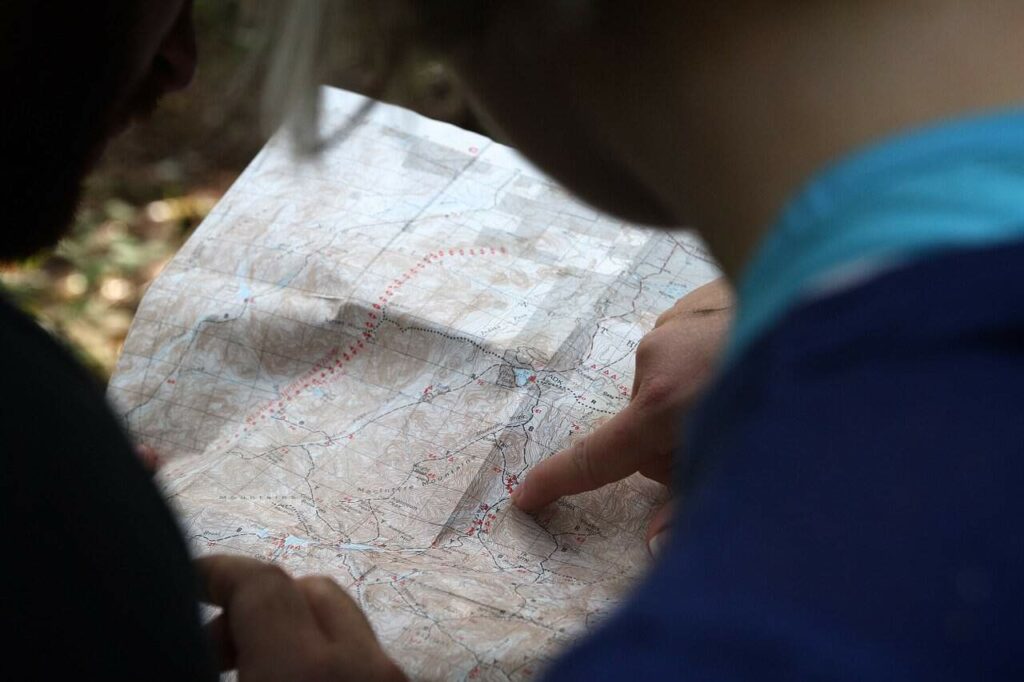
Content approved by Jerry Parker One of the many things Boy Scouts learn is how to navigate in the wilderness. Whether you’re in the woods for the day or you’re going on an extended adventure of camping and hiking, you’ll need to know how to pinpoint your location and find your way around. Navigation often […]
Content approved by Jerry Parker
 One of the many things Boy Scouts learn is how to navigate in the wilderness. Whether you’re in the woods for the day or you’re going on an extended adventure of camping and hiking, you’ll need to know how to pinpoint your location and find your way around. Navigation often involves a compass and a map. Using these things, you’ll be able to triangulate, which is the process of determining your location by taking bearings.
One of the many things Boy Scouts learn is how to navigate in the wilderness. Whether you’re in the woods for the day or you’re going on an extended adventure of camping and hiking, you’ll need to know how to pinpoint your location and find your way around. Navigation often involves a compass and a map. Using these things, you’ll be able to triangulate, which is the process of determining your location by taking bearings.
Having a compass in your backpack is important, but it’s not helpful if you don’t know how to use it. Once you know the basics of using a compass, you’ll need to practice with it to improve your compass skills. A standard compass has a clear base plate so you can set it over a map and see the map beneath it, a ruler to measure map distances, a direction of travel arrow that tells you the direction to point the compass when you’re following a bearing, a rotating bezel or azimuth ring with markings, an index line, a magnetized needle that points to the magnetic pole, an orienting arrow to orient the bezel, and orienting lines that rotate with the bezel. Knowing your declination value, which is determined by your geographic location, will enable you to know the difference between true north and magnetic north, which is where your compass needle will always point. Know how your compass adjusts for declination, as each one will be a little different. The first thing to do is to determine which way is north. If your compass has one needle, it’s pointing to magnetic north. If it has a double needle, the red one is pointing to magnetic north. After adjusting for magnetic declination, you should be able to pinpoint true north. Next, determine which direction you want to travel. For example, if you want to walk toward the southwest, stand so your compass needle points north across your right shoulder. Walk in this direction, glancing at your compass from time to time to make sure you’re not going off track.
Knowing how to read and use a map is a foundational navigation skill that will serve you well. Orienting the map is the first step. Place your compass on top of your map so the direction of travel arrow points to the top of the map. Adjust the bezel or azimuth ring to align north with the direction of travel arrow. Move the compass base plate so one edge aligns with the left or right map edge. Keep the map and compass in position, and turn yourself so the magnetic needle moves to line up with the outline of the orienting arrow. Take a look around you now to notice landmarks, which you might also see labeled on the map. As you begin to walk, keep checking your map and compass to make sure you stay on track.
Triangulation begins by looking around to identify landmarks. With your properly adjusted compass, orient the map so map north faces true north. Direct the travel arrow on the compass toward a landmark, and rotate the bezel until the magnetic needle moves into the outline of the orienting arrow. Outdoor enthusiasts might describe this process as turning the bezel until “red is in the shed.” Set down the compass on the map so the orienting lines are parallel with north-south lines on the map. Slide the compass until the top base plate edge hits the landmark, but keep the alignment with the north-south lines on the map. Draw a line from the landmark to the edge of the compass. You now know that you are somewhere along this line. Now repeat the process with a different landmark. The point where the lines cross is approximately where you are.


